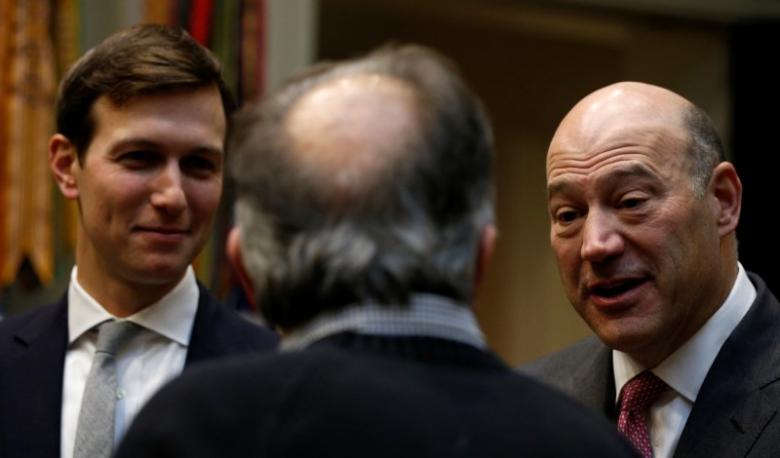By: Bruce Li
On Aug. 9, 1995, the Internet browser startup known as Netscape went public, opening with shares priced at $28 apiece. By the end of the day, one share was $58.25. By the end of the year, it was $174.
And so, with 24-year-old programming wunderkind Marc Andreessen at the helm, Netscape ushered in a new era in Silicon Valley, where the Internet was a realm of endless possibility. Investors and engineers alike clamored to follow in Netscape’s footsteps, and the market was soon filled with budding tech startups. This was a time of eager investing and ever-rising stock prices, and many young company founders and CEOs reaped a fortune. A startup social networking service called theGlobe.com posted a record-breaking first day gain of 606 percent and made its 23-year-old co-founders mega-millionaires. Marc Andreessen’s Netscape stake was worth well over $100 million—never mind the fact that, at the time of its initial public offering, Netscape had yet to make a cent in profits. As technology journalist Robert X. Cringley put it, “There were a lot of business plans that would have a section of the business plan that said, ‘And then a miracle happens…and out the other side comes the product.’”
By the time the dot-com bubble had burst about five years later, trillions of dollars of tech company market value had vanished, along with tens of thousands of jobs. Investors were inflating the value of companies for their booming popularity rather than chances for future profits. Most of the victims of the crash went under, while others, like Netscape, simply faded into irrelevance.
Fast forward to May 18, 2012, the day Facebook went public. The IPO was one of the most eagerly anticipated in technology, but the affair was marred by a litany of issues. Technical glitches on the part of the NASDAQ exchange delayed the opening of trade, and by the end of the day stock prices finished below the opening bell value in what was the beginning of a rough next two weeks, beset with steady declines in share value. Soon the accusations started pouring in—glitches hampered orders and cost investors millions, and Facebook’s underwriters Morgan Stanley, JP Morgan, and Goldman Sachs came under fire for artificially inflating the price of the stock and failing to share all pertinent information with the general public. By all accounts, the initial public offering of Mark Zuckerberg’s global social network was a fiasco.
Prior to its IPO, Facebook had been valued at tens of millions—before ever generating any revenue. By 2006, with a valuation of about $500 million, Facebook was operating at a net loss for the year. In fact, Facebook continued to accumulate millions in losses for the next few years. With a shaky IPO and dismal performance in the following months, at one point dropping to a low of less than half of the initial offering price, the skeptics seemed validated in labeling Facebook a fad.
But these days, Mark Zuckerberg surely has a few things to like about his situation. Facebook stock rose steadily throughout 2012, and had reached new heights by the end of 2013. Earlier this month, Facebook jumped 12 percent in after-hours trading thanks to the latest results from the social network’s fourth quarter earnings.
So just how well has Facebook been doing? In the year of 2013, Facebook reported profits of $1.5 billion, compared to just $53 million in 2012. Facebook advertising revenue keeps growing as its prices for individual ads skyrocket—with average fourth quarter prices a stunning 92 percent higher than last year—and its mobile presence continues to grow. For the first time, the majority of Facebook’s ad revenue is coming from mobile devices, and its share of the worldwide mobile advertising market has more than tripled in the last year.
Of course, this meteoric rise may slow down in the coming year, and this trend may be just that—a trend. Recently, it has become somewhat popular opinion to call Facebook unpopular. Studies abound proclaiming that teens no longer find Facebook cool, preferring instead sleeker alternatives like Twitter and Snapchat. But is coolness more important than ubiquity?
Facebook may have seemed gimmicky during its nascent years, but unlike most of the once-promising companies of the tech bubble just a decade earlier, the plan has been strategic, calculated, and anything but a miracle. On top of the news about Facebook’s mobile advertising gains and growing market share, the company has impressed with its revamped standalone Messenger app and, most recently, its new Paper news-reading app released earlier this month. Paper has been winning rave reviews and serves as an example of Facebook’s growing vision: a whole suite of standalone apps to specialize the many experiences tied into the social network. These new complementary apps will only strengthen the Facebook brand—and of course, open the door for more revenue-generating opportunities. Competing social platforms like Twitter and Snapchat are poised to follow in Facebook’s footsteps, but as of yet have not proven profitable. (In Snapchat’s case, investors are still waiting to see any revenue). There is a sense that Facebook has an advantage in the scope of the product it has to offer.
With 1.23 billion monthly active users, Facebook has built a network so deep that hearing someone doesn’t have a Facebook has become a rarity. The social media giant has amassed a detailed database of its users—from knowing their favorite TV shows to their closest friends to their hometowns—the likes of which has never been seen before. Services like iPhone puzzle games and online subscriptions prompt you to pick a username, password, and fill out several fields of information—or effortlessly connect through Facebook. One of the easiest ways to coordinate clubs and organizations is making a Facebook group. For better or worse, Facebook has become inextricably linked to most of our daily lives, and Mark Zuckerberg may have said it best: “Maybe electricity was cool when it first came out but pretty quickly people stopped talking about it because it’s not the new thing, the real question you want to track at that point is are fewer people turning on their lights because it’s less cool?”
Photo Credit: TwinDesign


